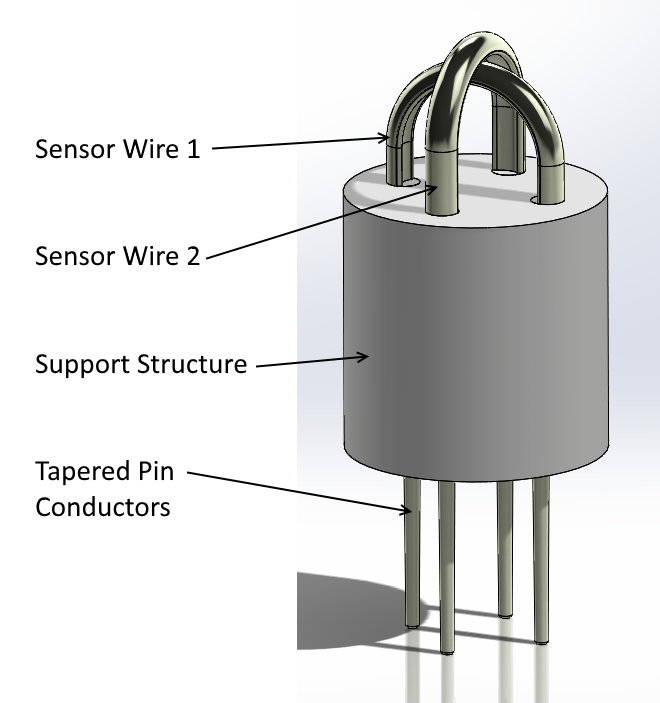The Hybrid-electrical-resistance-thermal (HERTEL) Sensor
Initiated in 2014, this project is focused on developing a specialized thermal sensor for use in high temperature gas reactor (HTGR) core environments, specifically for pebble bed core configurations. The proposed sensor would initially be useful for collecting validation data for pebble bed reactor design certification and are proposed as critical process instrumentation for eventual deployment of advanced gas-cooled reactors. The final deliverable of this project is the Hybrid-Electrical-Resistance-ThErmaL (HERTEL) sensor, which is a self-calibrating, high-precision thermal sensor designed to operate over long periods in harsh environments. The introduction of this sensor addresses a critical instrumentation need for pebble bed HTGRs, as a thermal sensor capable of operating in the pebble bed core region has not been previously demonstrated.
The benefits of the proposed HERTEL sensor are mostly concerned with better defining the dynamic heat transfer environment which exists in the reactor core. Collecting real-time thermal hydraulic data from the pebble bed fuel structure allows for optimization of fuel loading, reactor output, and improved safety analysis. The novel application of the MEMS fabrication techniques described allows the sensor to be integrated into the cladding of the fuel, placing the instrument directly onto the most critical heat transfer interface. If embedded instrumentation could be standardized as a key design feature of pebble bed fuel, as this project supports, drawbacks concerning fuel packing and distribution could be overcome and performance of advanced gas-cooled reactors could be improved by narrowing the significant operating uncertainty.
Although the benefits of the proposed instrumentation approach are evident, the extremely slow adoption of high-temperature gas reactors for power generation, and specifically the pebble bed core configuration, have made investigation into this project and commercialization of the proposed sensor a relatively slow moving endeavor. The project is currently awaiting the results of an initial patent application for the HERTEL sensor. Initial fabrication and testing of the sensor will be performed in late 2021. Please contact me for details if you are interested in collaboration.
Motivations for sensor development
Investigation of the thermal hydraulic behavior found in pebble bed reactor cores is fundamentally more challenging than investigation of static core configurations because the pebble bed is a self-heated, dynamic flow structure. The fuel pebbles stack irregularly thanks to pebble interfaces with the wall of the vessel, control rod voids, thermal expansion of the pebbles themselves, and a number of other physical interactions that create a complex, coupled system that significantly impacts heat transfer within the core.
Simulating the thermal hydraulic behavior of the pebble bed is difficult and collecting data to validate those simulations is perhaps even more challenging. We must continue to develop better thermal hydraulic simulations for analysis of pebble bed flow structures, so we must also collect more precise and accurate data to validate this continued advancement. By proposing a novel flow sensor specifically designed for this environment, we can address the unique challenges of the pebble bed geometry and seek to fill a gap in hardware that has prevented data collection in the past.
If the proposed sensor is standardized and techniques are developed to include sensor fabrication into the pebble fuel manufacturing process, additional benefits can be realized concerning fuel optimization and safety analysis. This project seeks to develop a novel, specialized sensor design for pebble bed HTGR thermal hydraulic core instrumentation, simulate performance of this sensor under normal operating conditions, and propose initial manufacturing methods applicable to high-volume fabrication of instrumented fuel pebbles.
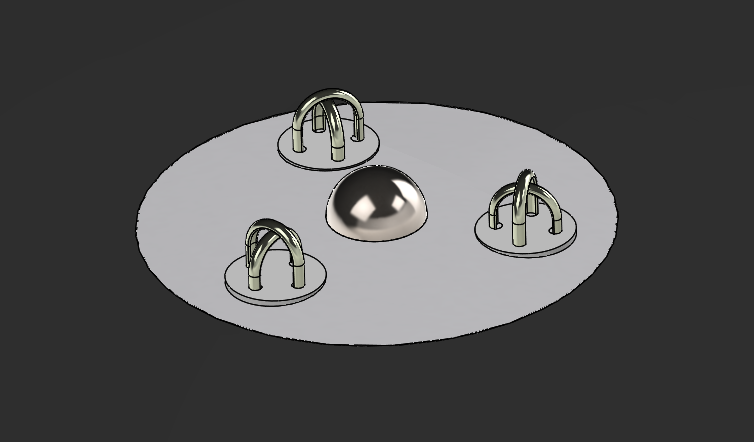


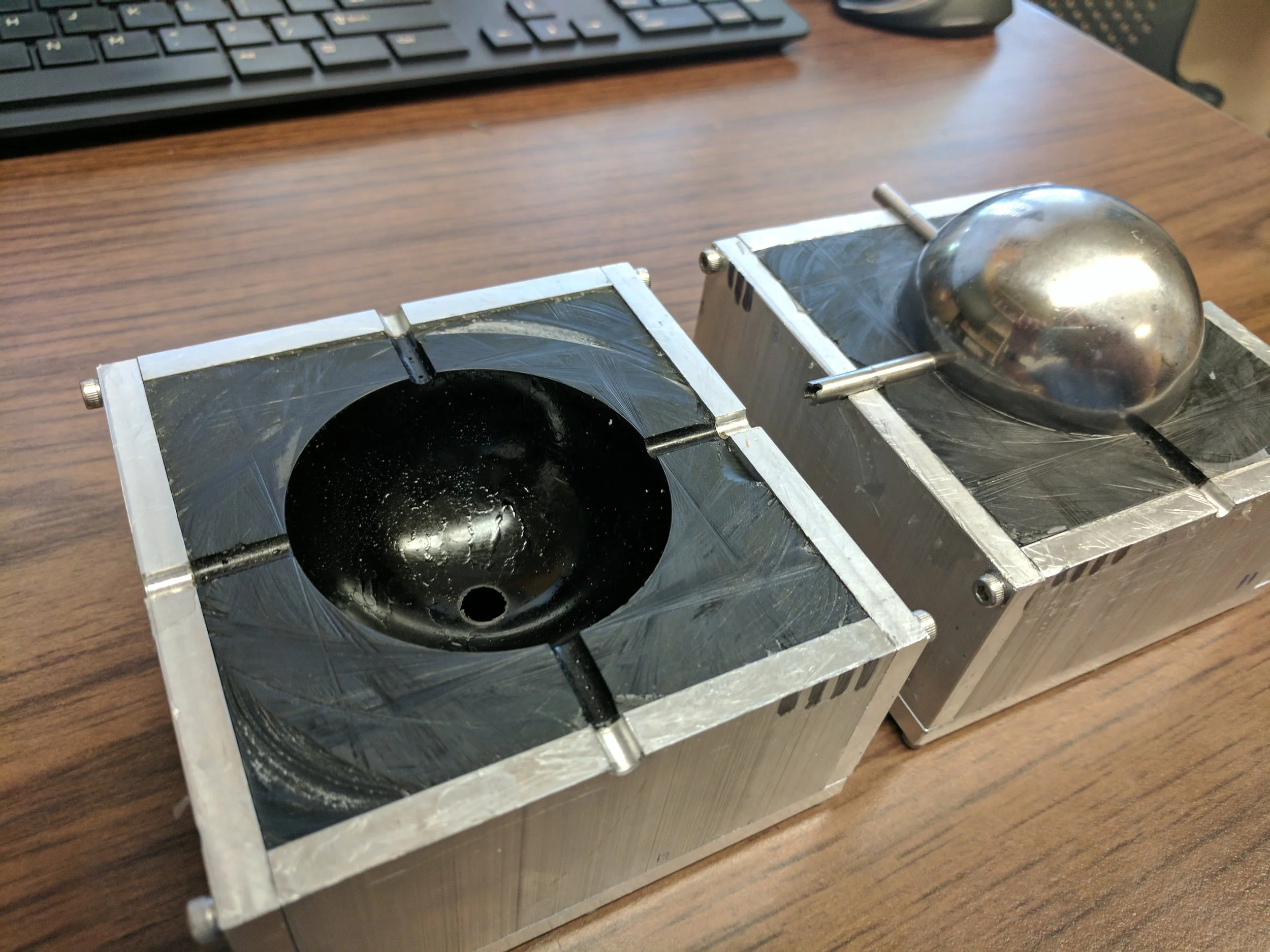
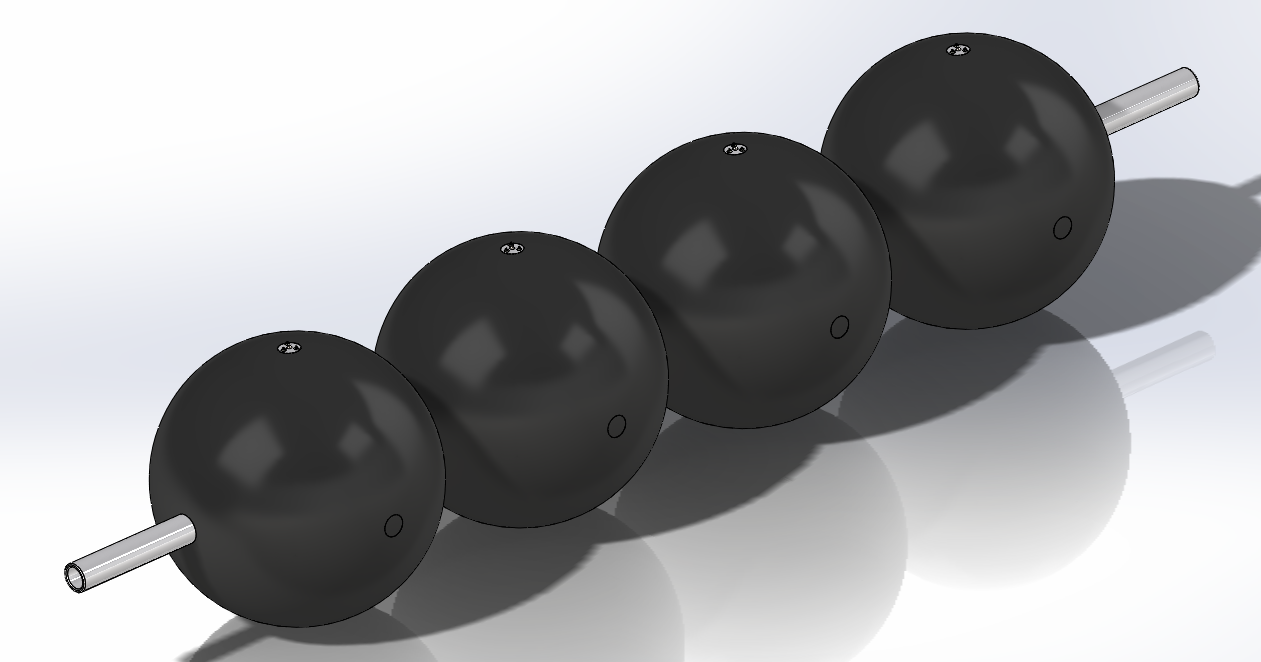

initial sensor Design concepts
After identifying the need for specialized instrumentation in pebble bed HTGR cores, the next task is to begin the design effort for a specialized sensor. Sensor design is driven by key performance requirements to fulfill the intended use case. To validate thermal hydraulic simulations of bulk pebble bed flow structures, temperature and flow parameters must be measured in the voids formed between fuel pebbles. In order to integrate the proposed sensor into the cladding of the fuel pebble, the geometry of the sensor should be very close to the pebble surface, ideally not protruding away from the pebble surface more than a few millimeters. By measuring boundary layer flow properties, bulk flow parameters can be inferred, thus a boundary-layer anemometer was selected as the initial design basis.
A compromise must be made between measurement resolution, accuracy, precision, durability, and complexity. To support a low-cost, standardized deployment, the sensor must be inexpensive, durable, and capable of utilizing high-volume manufacturing processes. Micro-Electrical-Mechanical Systems (MEMS) manufacturing techniques are a good approach for this application, as the sensors could be fabricated directly into the cladding of the fuel pebbles, but the complexity of the sensors is limited. Arrays of simple instruments, such as thermocouples and RTD sensors, are capable of measuring boundary layer flow parameters and are composed of simple geometry, thus an RTD array was chosen as the sensor configuration.
Initial sensor designs were fabricated using manual methods to test the practical application of the design approach outlined above. Ceramic fuel pebbles were cast in a silicone mold, with wiring channels and sensor mounting points included. The sensors were then fabricated from tungsten wire and ceramic support structure and installed into the ceramic pebbles. These pebbles were then grouped together on a tube, to allow the wiring from multiple instruments to be routed out of the testing chamber.
Unfortunately, these prototype sensors could not withstand the intended environment and a complete re-design was needed. The materials chosen were simply not durable enough. The next revision of sensor geometry instead focused on selection of ideal materials, then derived the sensor geometry as a functional extension of the material properties.
a novel integrated thermal sensor
Of critical importance to the function of the proposed HERTEL sensor is the materials which constitute the sensor trace and substrate. Pure platinum is selected as the material for the sensor trace and alpha-alumina, or sapphire, is selected as the substrate and shielding material.
The sensor materials must endure harsh thermal transients and operate at extremely high temperatures, which will degrade the sensor element over time and cause measurement drift. These materials must also be capable of being deposited and etched away with conventional MEMS manufacturing techniques so that efficient scaling can be realized.
By selecting a specific orientation of the substrate, the A-plane, a useful material property can be exploited. Sapphire exhibits an axially dependent thermal expansion coefficient, which is utilized by placing a set of sensor traces both parallel and perpendicular to the optical axis of the substrate. As the sensor is heated, the material expands at different rates parallel to each set of traces and a differential strain measurement can be used to infer the temperature. This strain-derived temperature measurement is then used to calibrate an RTD temperature measurement using the same sensor traces, allowing the sensor to detect and correct for calibration drift.
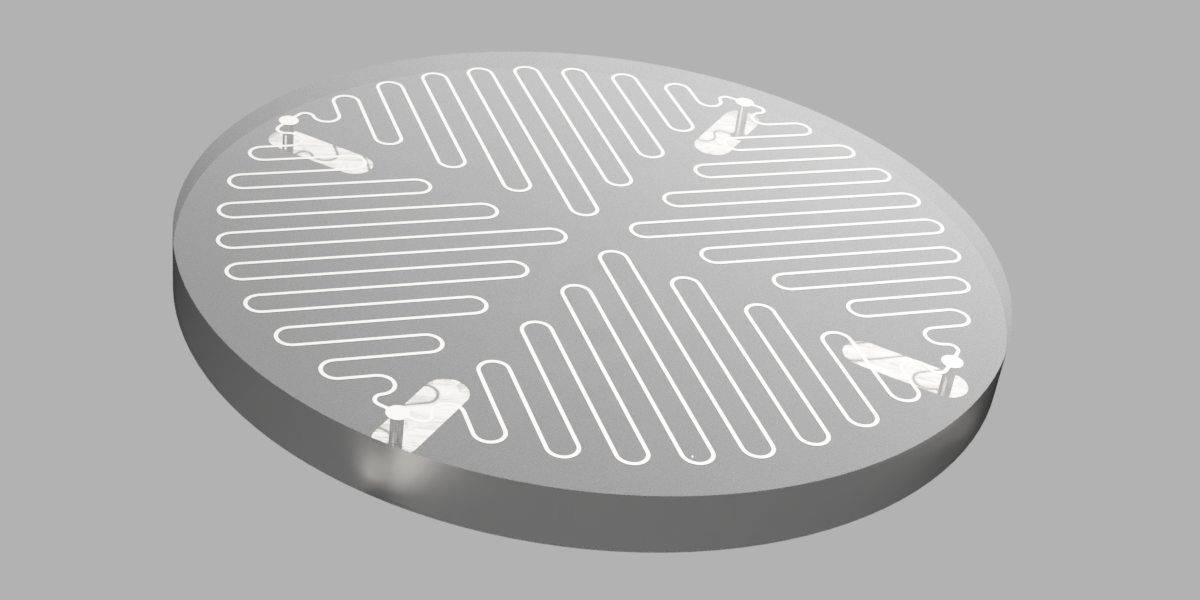




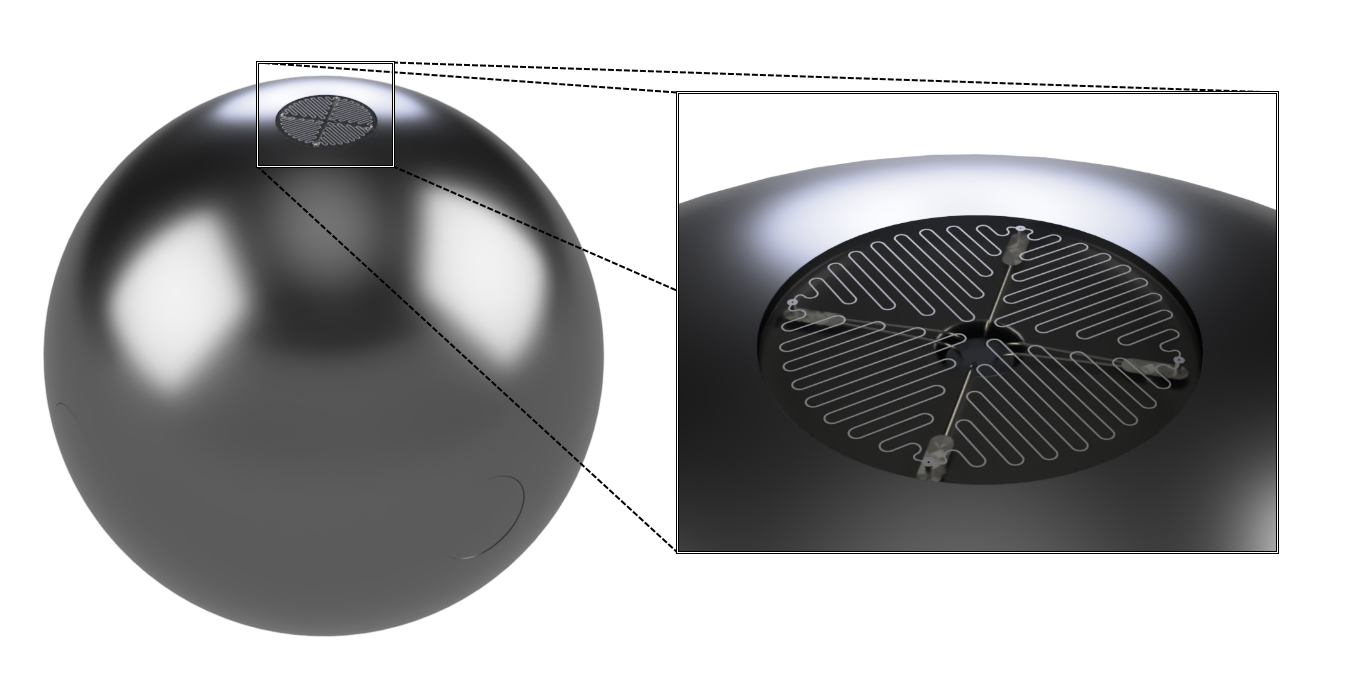
First Public Disclosure: Doctoral Defense
As this project was the subject of my doctoral dissertation, the first public disclosure of my invention, the HERTEL sensor, occurred as my doctoral defense on November 6th, 2020. The video linked here is an hour long presentation which reviews the project and describes the function of the HERTEL sensor in detail. Due to OSU policy regarding the COVID-19 pandemic, my final defense was delivered via Zoom video conference instead of the typical in-person lecture.
Although this was a huge milestone for the project, there was still a good amount of development work to complete. Unfortunately, I was only able to demonstrate the operation of the sensor using a custom build electro-mechanical simulation framework, rather than by fabricating and testing the sensor design directly. Although the results of the initial simulations were very promising, I can’t consider the project finished until I have a chance to fabricate and test the proposed sensor in the intended environment.
With the initial sensor design complete and the first public disclosure having occurred, a time limit was established. I have one year, until November 6th, 2021, to file a patent application in the United States. Thus, this is the next step of my journey is clear.
Next Steps: Patent & Testing Program
The HERTEL sensor is currently undergoing an investigation to determine the validity of a patent on the sensor design and fundamental method of operation. A patent application is expected to be filed by June of 2021.
Once a patent is granted, a trial run of sensors will be fabricated and tested via a partnership with the Kansas State University SMART Lab. Initial results will shape the next steps for industrialization and further testing in HTGR thermal hydraulic testing facilities. The eventual goal is to qualify the sensors for use as safety instrumentation in HTGR reactor core environments and license the design for use in advanced reactor safety systems.
A technology development company was established in December of 2020 to oversee the development, commercialization, and licensing of the HERTEL sensor. Hertel R&D LLC is the company that will seek investor funding for further development work as well as underwrite the program which will eventually bring the proposed sensor to market.
A number of other sensor designs will follow the same path as the HERTEL sensor in the coming years, as there exists a large technology gap in harsh environment instrumentation that can be filled through the use of integrated MEMS sensor arrays. The development company established here is intended to standardize this process of commercialization for these sensors. Check this page for a link to the new Hertel R&D LLC website in early 2021.
Files
A single page information sheet for an early sensor concept provided for the HTTF instrument feasibility study: Info Sheet
Additional files will be posted once a provisional patent is granted and the publication embargo from Oregon State University has ended.



